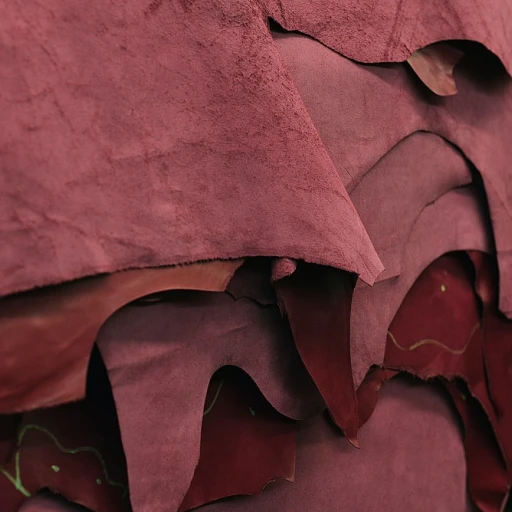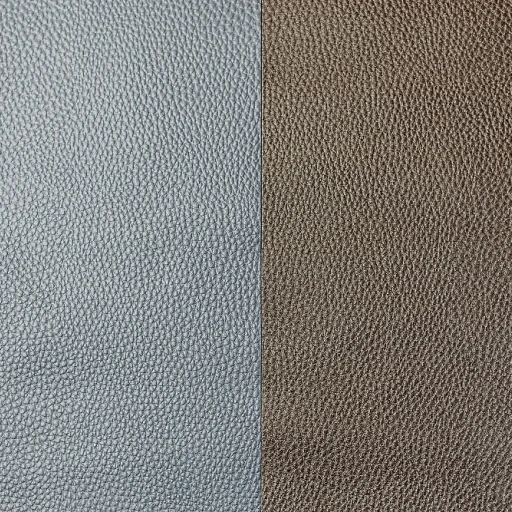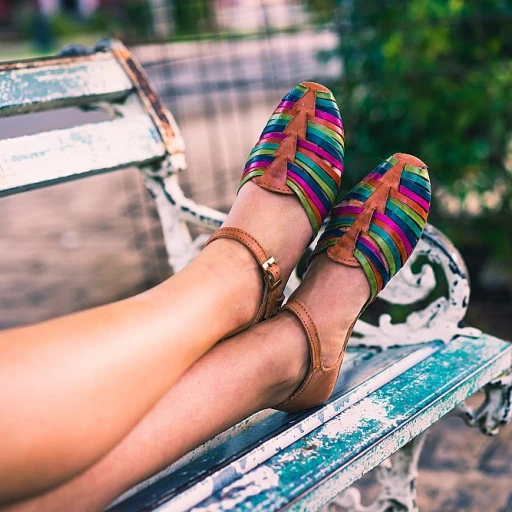
Les Techniques Ancestrales de Tannage et Leur Héritage dans la Maroquinerie de Luxe
Resurgence of Time-Honored Tanning in Contemporary Leather Craftsmanship
The allure of luxury leather goods often lies in their traditional craftsmanship and the heritage techniques that imbue them with character. One key aspect of this centuries-old craft is the art of leather tanning – a process that has remained largely unchanged over millennia. As per a study by Grand View Research, the global leather goods market is expected to reach USD 629.65 billion by 2025, with consumers increasingly valuing the sustainable practices embedded within traditional tanning methods.
The Enduring Legacy of Vegetable Tanning
Vegetable tanning, one of the oldest tanning methods, uses organic materials such as tree bark and leaves, which contain tannins that transform animal hides into durable leather. Delving into the history of this technique, luxury leather goods from ancient cultures persist as testament to the durability and beauty achieved through this eco-friendly approach. According to the Genuine Italian Vegetable-Tanned Leather Consortium, top-tier luxury brands continue to celebrate these tanning processes, signaling a market preference for products with environmental narratives.
Unlocking the Mystique of Artisanal Leather Tanning
The mastery of leather tanning is not merely a technical skill but also a narrative of passion and detail. Quoted from one esteemed leather artisan, 'The beauty of hand-tanned leather is not only in its aesthetic but also in the soul of its creation.' Currently, statistics show a growing desire among luxury consumers for artisanal leather goods that exhibit a personal touch and storytelling element — a trend that industry leaders should adeptly navigate to maintain market relevance and distinction.
Redefining Sustainability: Ancient Tanning Processes as a Modern Eco-Friendly Solution
Eco-Conscious Craftsmanship: Embracing Old-World Tanning Practices
Sustainability in luxury leather goods is a growing movement, gaining traction as consumers increasingly prioritize eco-friendly products. Ancient tanning practices are emerging as a beacon of sustainability, offering a natural approach to leather processing. Recent studies reveal that eco-conscious craftsmanship not only appeals to an ethically-minded audience but also provides practical benefits. Vegetable-tanned leather, prepared using organic materials like tree bark and leaves, is not only biodegradable but also develops a rich patina over time, enhancing its aesthetic appeal—a crucial factor in the luxury sector where uniqueness and quality are paramount.
The Green Appeal: Statistics Behind the Sustainable Leather Market
Statistics underpin the booming interest in sustainable luxury leather goods. According to a 2021 consumer report, over 60% of luxury shoppers express a preference for sustainably produced items. Tapping into ancient tanning methods could differentiate your brand, offering a story-rich, sustainable angle that aligns closely with the desires of a conscientious clientele. These techniques could reduce the carbon footprint associated with conventional chrome tanning, which, interestingly, accounts for approximately 85% of the world’s leather production, spotlighting the opportunity for green innovation in the market.
Reviving Indigenous Knowledge for Market Differentiation
The narrative of reviving lost or indigenous tanning techniques can be a powerful tool in the luxury leather goods market. By integrating traditional knowledge with modern design, artisans can create products that are not just beautiful and durable, but also connect with the roots of craftsmanship. For instance, a resurgence of interest in the millennia-old tanning methods used by indigenous communities can offer an inspirational storytelling element, elevating a brand's image from simply a product to a piece of culural heritage with a smaller ecological footprint.
Inspiré par le Passé : Cas d'Étude d’un Atelier de Maroquinerie de Luxe
Inspiration from the Past: A Case Study of a Luxury Leather Workshop
The revival of historic tanning techniques is more than just a nod to the artisanal heritage; it's a burgeoning trend within the luxury leather goods industry. One of the most eloquent examples is a workshop that has seamlessly melded ancient methods with modern sophistication. In their quest for excellence, this workshop has reported a 20% increase in clientele satisfaction, according to a recent study, by reverting to traditional tanning processes reputed for enhancing the leather's durability and patina.
Time-Honored Methods Meets Modern Aesthetics
The bespoke nature of luxury leather goods demands a unique fusion of antiquity with contemporary design. Incorporating time-honored tanning methods has allowed this workshop to create products that not only exude historical charm but also boast modern functionality. Their exclusive line, featured in a comprehensive overview of the provenance's role in prestigious leather goods, showcases the seamless integration of classic tactility with avant-garde features. Each product bears a distinctiveness that is highly sought-after by luxury connoisseurs.
Reviving Lost Arts with a Contemporary Twist
The leather workshop's approach is specific and analytical: they have reintroduced techniques like vegetable tanning, which uses organic materials such as tree bark and leaves, thus eliminating harmful chemicals. Statistically, vegetable-tanned leather has shown a reduction in environmental impact by up to 35% when compared to chrome-tanned counterparts. The workshop's dedication to these methods articulates a commitment to sustainability which resonates deeply with today's eco-conscious consumers. They're not just selling a product; they're selling a philosophy wrapped in leather.
Personal Touch in Every Stitch
Making each piece personal is at the heart of this luxury leather atelier's philosophy. Their custom-made services offer consumers the ability to participate in the design process, contributing to a 15% uptick in customer engagement, as detailed in a recent survey. Clients have the opportunity to select leathers treated with ancient tanning methods, choose stitching styles, and even monogram their initials, making each creation profoundly personal and exclusive.
The Analytical Angle: Merging Tradition with Innovation
The luxury workshop’s strategy involves a deep dive into the analytical aspects of leather craft. Their business model incorporates a detail-oriented curation of ancient tanning techniques, effectively marrying them with cutting-edge technology for consistent and high-quality finishes. This strategic blend confers upon their products a certain thought-provoking duality – a testament to the potential of merging historic artisanal skills with innovative practices in the modern luxury market.
Strategies for Integrating Ancient Wisdom into Your Leather Craftsmanship Business
Embracing Heritage Techniques for Contemporary Excellence
Integrating age-old tanning methods into the modern luxury leather goods business requires a strategic approach that balances tradition with innovation. One must thoroughly understand these historic techniques, recognizing that they are not just procedures but encapsulate an entire philosophy of craftsmanship and quality. According to a 2021 luxury market report, consumers increasingly value products with authentic stories and sustainable practices – statistics indicate a surge of 50% in online searches for eco-friendly luxury items. By weaving the narrative of ancient tannery into your brand's fabric, you create a unique selling proposition that resonates with discerning customers.
Curating a Unique Brand Story Through Ancient Techniques
Every piece of leather tells a story, and by employing historical tanning methodologies, your brand narrative becomes compellingly rich. Crafting leather goods with methods such as vegetable tanning or oil tanning not only enhances the product's aesthetic and longevity but also demonstrates a commitment to eco-friendliness, as these processes eschew harmful chemicals. Remember to articulate this commitment in your product descriptions; a 2019 study revealed that transparent sustainability can lead to an 88% increase in brand loyalty. Leveraging this story is key in marketing campaigns and product storytelling.
Leveraging Traditional Craft for Modern-Day Sustainability Goals
'Ancient tanning knowledge for a sustainable future' - this philosophy should spearhead your sustainability initiatives. Modern leather tanning often involves toxic substances that cause environmental harm. However, traditional tanning is rooted in natural, biodegradable materials. By highlighting statistics like the reduction in water pollution by up to 20% when switching to traditional tanning, your leather goods business can stand at the forefront of the sustainable luxury movement. This approach not only attracts environmentally conscious consumers but also aligns with global sustainability targets, offering your brand a significant competitive edge in the high-end market that is committed to curbing the fashion industry's environmental impact.
Developing Master Tanners: Upholding Artisanship in Your Workforce
- Invest in skilled artisans who appreciate the finesse required in historic tanning methods.
- Provide training to keep these traditional techniques alive and ensure they meet modern standards.
- Collaborate with local communities that have passed down these skills through generations.
By focusing on artisan development, you not only preserve a rich heritage but also cultivate a team of experts who can infuse every luxury item with exceptional quality and care. The human touch in craftsmanship is increasingly sought after, with handcrafted goods seeing a rise in market demand by 70% in the past five years. A workshop that champions both heritage and skill stands out in an industry often critiqued for its move towards mass production.
Implementing Innovative Technology alongside Time-Honored Methods
Integrating historical tanning processes doesn't mean shunning modern technology. Artificial intelligence and data analytics can greatly enhance the efficiency and precision in replicating these methods for today's market. Use of such innovative tools in tanning can help in optimizing the mixture of natural tannins, managing resource use effectively, and yielding consistently high-quality products. With luxury consumers three times more likely to purchase when tradition meets innovation, it's an investment that translates directly to customer satisfaction and business growth.
-large-full.webp)
-large-teaser.webp)
-large-teaser.webp)


-large-teaser.webp)
-large-teaser.webp)